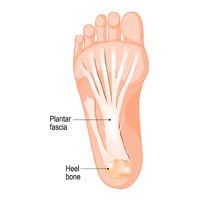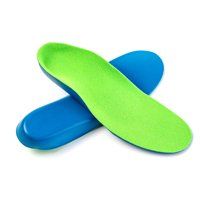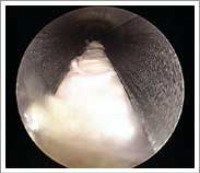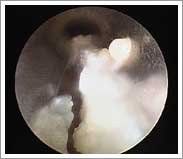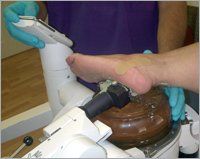Heel Pain
Heel pain
is most often caused by plantar fasciitis, a condition that is sometimes also called heel spur syndrome when a spur is present. Heel pain may also be due to other causes, such as a stress fracture, tendonitis, arthritis, nerve irritation, or, rarely, a cyst. Because there are several potential causes, it is important to have heel pain properly diagnosed. Dr. Sheff is trained to distinguish between all the possibilities and determine the underlying source of your heel pain.
What Is Plantar Fasciitis?
Plantar fasciitis is an inflammation of the band of tissue (the plantar fascia) that extends from the heel to the toes. In this condition, the fascia first becomes irritated and then inflamed, resulting in heel pain. Symptoms of plantar fasciitis are:
- Pain on the bottom of the heel
- Pain that is usually worse upon arising
- Pain that increases over months
People with plantar fasciitis often describe the pain as worse when they get up in the morning or after they've been sitting for long periods. After a few minutes of walking, the pain decreases, because walking stretches the fascia. For some people, the pain subsides but returns after spending long periods on their feet.
This is an intraoperative view of the plantar fascia. The fascia is made up of white fibers.
This is a view after Dr. Sheff has released the fascia with the use of a miniature scalpel. By releasing the fibers, the tension on the fascia is relieved and can no longer pull on the heel bone, which is the primary cause of pain in plantar fasciitis.
Causes of Plantar Fasciitis
The most common cause of plantar fasciitis relates to the faulty structure of the foot. For example, people who have problems with their arches, either overly flat feet or high-arched feet, are more prone to developing plantar fasciitis. Wearing non-supportive footwear on hard, flat surfaces puts abnormal strain on the plantar fascia and can also lead to plantar fasciitis. This is particularly evident when a person's job requires long hours on their feet. Obesity also contributes to plantar fasciitis.
Diagnosis
To arrive at a diagnosis, Dr. Sheff will obtain your medical history and examine your foot. Throughout this process, all the possible causes for your heel pain other than plantar fasciitis are ruled out. In addition, diagnostic imaging studies such as x-rays, ultrasound, a bone scan, or magnetic resonance imaging (MRI) may be used to distinguish the different types of heel pain. Sometimes heel spurs are found in patients with plantar fasciitis, but these are rarely a source of pain. When they are present, the condition may be diagnosed as plantar fasciitis/heel spur syndrome.
Treatment Options
Treatment of plantar fasciitis begins with first-line strategies, which you can begin at home:
- Stretching exercises. Exercises that stretch out the calf muscles help ease pain and assist with recovery.
- Avoid going barefoot. When you walk without shoes, you put undue strain and stress on your plantar fascia.
- Ice. Putting an ice pack on your heel for 10 minutes several times a day helps reduce inflammation.
- Limit activities. Cut down on extended physical activities to give your heel a rest.
- Shoe modifications. Wearing supportive shoes that have good arch support and a slightly raised heel reduces stress on the plantar fascia. Your shoes should provide a comfortable environment for the foot.
- Medications. Nonsteroidal anti-inflammatory drugs (NSAIDs), such as ibuprofen, may help reduce pain and inflammation.
- Lose weight. Extra pounds put extra stress on your plantar fascia.
If you still have pain after several weeks, seek medical advice from Dr. Sheff, who may add one or more of these approaches:
- Strapping. Strapping helps support the foot and reduce strain on the fascia. This type of strapping mimics what a custom orthotic device can do for someone with heel pain. Should you respond favorably to the strapping, then a pair of custom made prescriptive orthotics are often made for you that will help correct the problem.
- Orthotic devices. Custom orthotic devices that fit into your shoe help correct the underlying structural abnormalities causing the plantar fasciitis. Orthotics are best thought of as devices that control the problem but do not cure it. As long as a patient with heel pain has their custom devices in place, they can be pain-free.
- Laser Therapy. The pain and inflammation that occur in fasciitis can be quickly reduced if not eradicated with the use of the MLS Class IV Laser. In as little as a single treatment, patients often experience significant relief in their pain. The laser is safe, FDA approved, and painless with no side effects.
- Injection therapy. Often, corticosteroid injections are used to help reduce inflammation and relieve pain. This therapy commonly is used as an adjunct to laser therapy.
- Non Steroidal Anti Inflammatories (Motrin, Aleve, etc) can also help aid in reducing the inflammation and relieve pain.
- Removable walking cast. A removable walking cast may be used to keep your foot immobile for a few weeks to allow it to rest and heal.
- Night splint. Wearing a night splint allows you to maintain an extended stretch of the plantar fascia while sleeping. This may help reduce the morning pain experienced by some patients.
- Physical therapy. Exercises and other physical therapy measures may be used to help provide relief.
Although most patients with plantar fasciitis respond to non-surgical treatment, a small percentage of patients may require surgery. If, after several months of non-surgical treatment, you continue to have heel pain, surgery will be considered. Dr. Sheff can discuss the surgical options with you and determine which approach would be most beneficial for you.
Shockwave therapy is an option for those who fail to respond to conservative treatment. This is performed in the office under local anesthesia.
Long-term Care
No matter what kind of treatment you undergo for plantar fasciitis, the underlying causes that led to this condition may remain. Therefore, you will need to continue with preventive measures. If you are overweight, it is important to reach and maintain an ideal weight. For all patients, wearing supportive shoes and using custom orthotic devices are the mainstay of long-term treatment for plantar fasciitis.
Will I need surgery?
Surgery for plantar fasciitis is rare, given that the vast majority of patients with the condition will respond favorably to non-surgical treatments.
However, for those that fail conservative therapy, other options are available:
- Endoscopic Plantar Fasciotomy (EPF). Not unlike procedures wherein the gallbladder is removed through tiny incisions made in a patient's abdomen, the EPF procedure employs two small incisions made at either side of the patient's heel. A camera (endoscope) is inserted into one incision, and the plantar fascia is visualized on a television monitor. Through the other incision, a tiny knife is inserted, and the fascia is cut while being watched on the monitor. Once the portion of the ligament is released, it can no longer pull on the heel, and thereby will not cause the patient pain anymore. Dr. Sheff performs this surgery at Newport Hospital. The operation requires either spinal anesthesia, general anesthesia, or local anesthesia with IV sedation (aka "twilight anesthesia").
- Extracorporeal Shockwave Therapy (ESWT). ESWT involves the use of the same technology that has been used for years to treat kidney stones without the need for surgery. The plantar fascia is first visualized on a small screen with the aid of an ultrasound machine. The ligament is then targeted with the ESWT device and receives almost 4,000 individual bursts of ultrasonic shockwaves. This has an effect of producing new blood vessel growth at the plantar fascia and thereby helps the body to heal and recover from the chronic inflammation. The benefit of this procedure is that it is non-invasive and can be performed in the office setting with local anesthesia only. Patients often find that they have relief soon after the procedure; however, all patients are individuals and heal at different rates.
- Amniotic Stem Cell Therapy. This is becoming the accepted choice to help heal soft tissue injuries. Research has shown that its anti-inflammatory properties help reduce swelling and pain. Additionally, it has proven to help regenerate injured tissue and get you back on your feet faster.
To schedule an appointment, contact us today at 401-846-8050
if you are experiencing heel pain.
Do you know why fish are thin? They eat fish.
- Jerry Seinfeld

